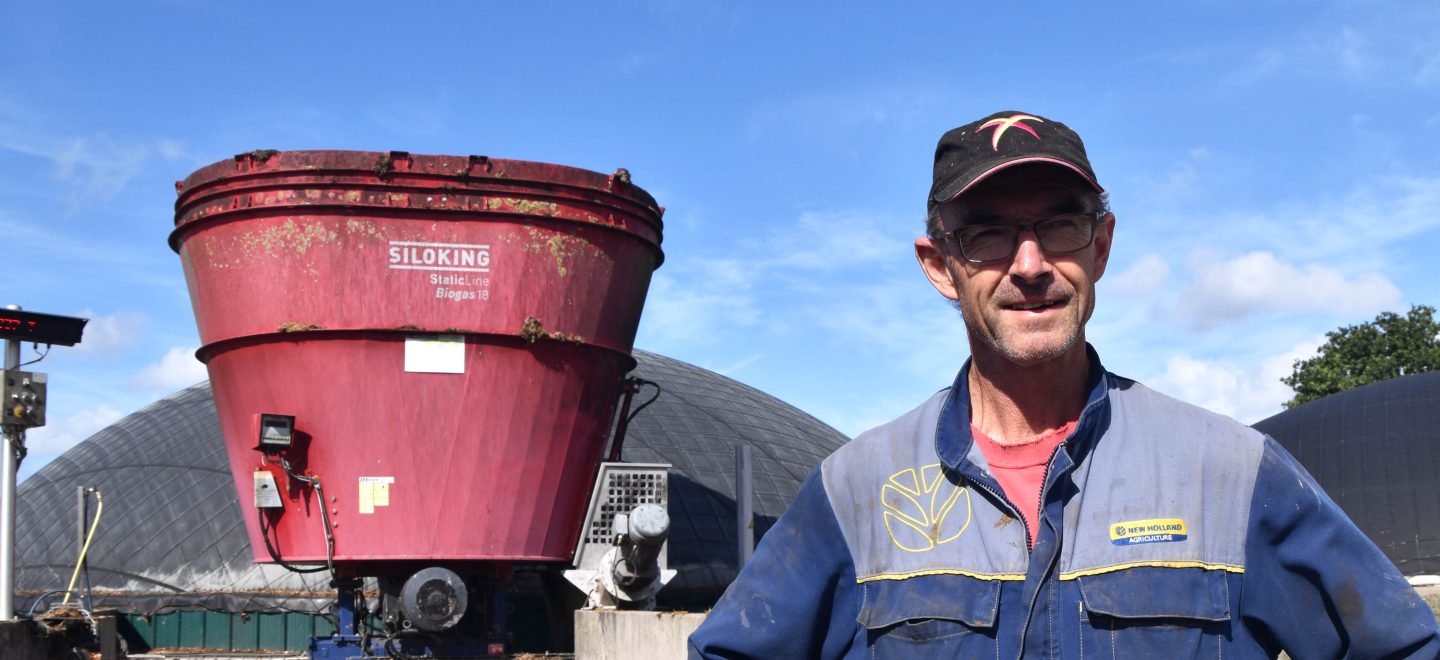Since 2015, Pouliquen has been recycling the organic waste from its shallot and onion processing activities. More than twenty tonnes per month of peels and damaged bulbs not fit for consumption go to produce biogas through methanisation. Today we invite you to join us in Lanhouarneau, around 20km from the Pouliquen head office, to learn about the digester plant of Paul Le Fur: farmer, biomethane producer and Pouliquen partner.
Recycling organic waste: a well-established process
Each day, shallot and onion processing generates around a tonne of organic waste, totalling more than twenty tonnes per month. Since 2015, at Pouliquen, peels and damaged bulbs are no longer seen as useless waste, but rather as a precious raw material that drives biomethane production.
In order to recycle this waste, a farm trailer is located outside. The vacuum system located above the production line blows all the materials it removes into the trailer, and bulbs unfit for consumption also go into this receptacle.
Methanisation: a recipe for success
Upon arrival at the farm, we’re greeted by two large domes located right next to the stable. This is where organic waste is transformed into biogas. Several times a day, the digester is fed with various substances including liquid manure, cow and chicken dung, and plant waste. A close watch is kept on the biogas. Co2, CH4, O2, Hydrogen… Analyses are carried out several times a day to determine what needs to be added to ensure biomethane production, and to avoid the motor becoming clogged. The motor currently in place produces an average of 2,400kWh per day.
Gas production: energy savings and crop diversification
On his property, which he farms with his brother, Julien, and his sister-in-law, Annie Prigent, Paul Le Fur has diversified his production. Today, the farm has 125 dairy cows, 80 heifers and a broiler chicken operation with 100,000 hens destined for the French market. The farm’s 135 hectares are mostly dedicated to the production of feed crops for the animals. All of the waste produced by these activities is recycled through the methanisation process.
“In the methanisation process, the most important thing is the digester. It enables us to produce not only gas, but also to heat the houses and barns. In summer, it allows us to dry the hay for the animals and to obtain higher-quality feed than before.”
Installing a methanisation plant made it possible for these farmers to diversity their crops, and in particular to introduce alfalfa hay to their cattle feed. Although this feed crop is nutritionally valuable, it’s difficult to process in the wet climate of Finistère. However, the heat produced by the digester makes it possible to dry alfalfa hay, solving this problem and thereby improving the cattle feed.
Recycling organic waste: a response to energy and environmental challenges
Not all of the organic matter fed into the digester is transformed into gas. The waste product of the methanisation process is a liquid known as digestate, which is used as compost for field fertilisation. The ammonia nitrogen in the digestate makes it possible to reduce fertiliser consumption by between 30 and 50% depending on the year.
The benefits are many: activity diversification leading to revenue increases; improvements to cattle feed; energy savings; and less fertiliser purchases.
“Nothing is lost, nothing is created, and everything is transformed.” For over 7 years now, Pouliquen has participated in this process of transformation by recycling the organic waste from its shallot and onion processing activities, a commitment that is part of the company’s CSR policy.
